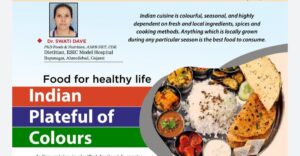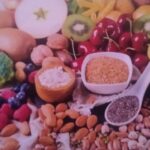Indian cuisine is colourful, seasonal, and highly dependent on fresh and local ingredients, spices and cooking methods. The India food culture is shaped by climate, land, and access to natural resources. Anything which is locally grown during any particular season is the best food to consume.


Indian cuisine is glorified for its rich curries, infinite array of fresh spices and complex flavor pairings. The India food culture is shaped by climate, land, and access to natural resources. Because of the vast geographical variations, Indian crops are developed differently, including all in-season fruits and vegetables. As the issue of climate change is exploding drastically, the risk of agricultural uncertainty is also very high. The most produced food becomes the staple food for that region (close to the sea, desert or the mountains).
Indian cuisine is colourful and seasonal
Indian cuisine is colourful, seasonal, and highly dependent on fresh and local ingredients, spices and cooking methods. We have the traditional way of including more natural hues to our food platter. North Indians relish more of roti/paratha where as in southern and eastern states of India, rice is mostly found as their food dishes. This doesn’t mean north Indians don’t eat steamed idli-crispy dosa or in south they don’t eat wheat bread-daliya. We all love our dal-chawal, roti-subzi, dal-bati, chole-bhature, rajma-chawal, idli-sambhar, macch-bhaat dishes with different flavours.
Enriched with several varieties of tadka dals, rich aromatic gravies, spicy subzis, sinful snacks with chutnies, assorted rotis, rice and a limitless category of vegetables and fruits, Indian cuisine is colourful in every aspect. At its heart you will uncover vegetables-fruits and overlapping flavors of herbs and spices.
Also Read: Include herbs and spices in everyday diet.
Anything which is locally grown during any particular season is the best food to consume. It looks fresh, tastes fresh, and is overwhelming with distinct flavor. It is important to know the amazing and multiple benefits of seasonal food and local produce and do everything we can to keep ourselves healthy along with helping our local farmers’. Each season of India (spring, summer, autumn, monsoon, and winter) produces enough foods for us to add up variety in every day meals.
Eat more seasonal and local produce
This is the reason you need to get hold of the seasonal and local produce to reap the health benefits of all foods. They are primarily less processed (as close to its natural state as possible) and free of chemical additives thus rich in nutrients. Non seasonal foods which comes from a far is packed with harmful chemicals to maintain a fresh look, but it loses its nutrients. Freshness of food is important to retain nutrients. It protects our health and reduces our carbon footprint to create a powerful eco-friendly environment.
The winter (December to February) comes with a new load of greens (dark green leafy vegetables): fenugreek, spinach, radish, mustard, spring onion, green garlic, amaranth; french beans; cauliflower, pumpkins, roots: carrots, beets, radish, sweet potatoes, turnip, yam; and fruits like amla, orange, guava, chiku, apples, lemon, kiwi, papaya, grapes, dates, figs, etc.
And with summer comes a basketful of vegetables: cluster beans, lady-finger, cucumber, capsicum, various gourds (bottle, bitter, ash, sponge), jackfruit, pumpkin, and brinjal. A bounty of fruits including raw green mango, ripen mango, melons (water-musk), litchi, plums, strawberries, palm fruit, cashew. These contain dietary fibers (essential for good digestion), micro-nutrients, and water to keep well hydrated.
Monsoon brings cleansing and thirst-quenching rains by gulping down the hot tea, coffee or cocoa along with bhajia-pakoda platters. Having a hot bowl of soup with a lot of herbs would help you keep respiratory infections at bay. A few varieties of gourds, colocasia leaves, corn, and fruits like custard apple, peaches, plums, pomegranates, pears, apple, cherries, stone fruits, etc. are easily available.
Watch this video: Incredible Health Benefits Of Barley
Every region has its delicacies
Every region in India has its delicacies and distinct styles of preparation. Since the cookery differ with changing areas, each dish has something unique about itself. Potato, onion, tomatoes and a perfect bland of spices (turmeric, cumin, coriander, ginger, garlic, curry leaves), are used to make a huge variety of dishes with different cooking procedures: steaming, ghee tadka (tempering), dum, roasted, deep-fried, fermented, and many more.
1. Get creative with rotis, curries, salads and chutneys to add some colour to your meals.
2. Try to incorporate different cereal grains and millets: bajra, jowar, makki, ragi, etc. to make delicious rotis.


Dr SWATI DAVE- Dietitian
ESIC Model Hospital
Bapunagar, Ahmedabad, Gujarat











